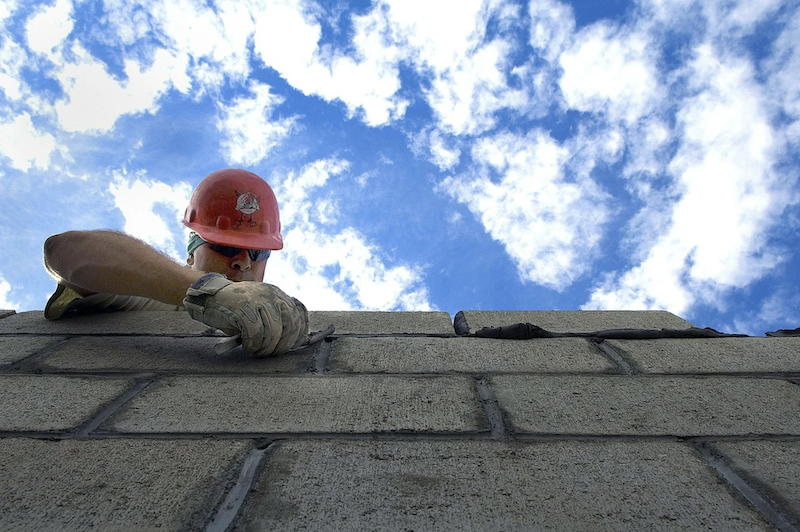Construction employment in December remained below pre-pandemic levels in two-thirds of the states even though 37 states and the District of Columbia added construction jobs from November to December, according to an analysis by the Associated General Contractors of America of government employment data released today. Association officials said the new data highlights how broadly the industry has been impacted by the pandemic and underscores the need for additional coronavirus recovery measures.
“While most states recorded construction employment gains in December, the pickup is likely to be temporary for many,” said Ken Simonson, the association’s chief economist. “Participants in our association’s recent Hiring and Business Outlook Survey expect the dollar volume of most project types available to bid on to decline in 2021.”
The survey, which included responses from more than 1,300 contractors in every state and D.C., asked about prospects for 16 categories of projects. On balance, respondents expect growth only for non-hospital health care, such as clinics, testing and screening facilities, and medical laboratories; warehouses; and water and sewer projects.
Seasonally adjusted construction employment in December was lower than in February—the last month before the pandemic forced many contractors to suspend work—in 34 states and was unchanged in Kansas, Simonson noted. Texas lost the most construction jobs over the 10-month period (-35,600 jobs or -4.5%), followed by New York (-30,900 jobs, -7.5%), Florida (-17,500 jobs, -3.0%) and New Jersey (-16,700 jobs, -10.0%). Vermont experienced the largest percentage loss (-23.1%, -3,400 jobs), followed by New Jersey.
Only 15 states and the District of Columbia added construction jobs from February to December. Virginia added the most jobs (10,800, 5.3%), followed by Utah (7,000 jobs, 6.1%) and Alabama (6,100 jobs, 6.4%). Alabama added the highest percentage, followed by Utah and South Dakota (5.7%, 1,400 jobs).
Construction employment decreased from November to December in 11 states and D.C., increased in 37 states and was unchanged in North Carolina and Rhode Island. Arizona had the largest loss of construction jobs for the month (-4,100 jobs or -2.3%), followed by Louisiana (-2,000 jobs, -1.5%). Delaware had the largest percentage decline (3.2%, -700 jobs), followed by Arizona, Alaska (-1.9%, -300 jobs), and Louisiana.
California added the most construction jobs over the month (31,600 jobs, 3.7%), followed by New York (8,500, 2.3%) and Illinois (8,300 jobs, 3.8%). New Hampshire had the largest percentage gain for the month (4.0%, 1,100 jobs), followed by Illinois and New Mexico (3.8%, 1,800 jobs).
Association officials said demand for construction will continue to suffer until the coronavirus is under control and urged federal officials to enact measures to help stem additional job losses in the sector. These new measures should include new federal investments in infrastructure, backfilling depleted state and local construction budgets and moving quickly to forgive Paycheck Protection Program loans issued last year.
“Contractors are eager to save as many jobs as possible during the next several months on the expectation demand will return once the coronavirus comes under control,” said Stephen E. Sandherr, the association’s chief executive officer. “Washington officials can help save countless construction careers by acting now to stabilize demand.
View state employment February-December data and rankings; and November-December rankings.
Related Stories
Market Data | Mar 23, 2016
AIA: Modest expansion for Architecture Billings Index
Business conditions softening most in Midwest in recent months.
Retail Centers | Mar 16, 2016
Food and technology will help tomorrow’s malls survive, says CallisonRTKL
CallisonRTKL foresees future retail centers as hubs with live/work/play components.
Market Data | Mar 6, 2016
Real estate execs measure success by how well they manage ‘talent,’ costs, and growth
A new CBRE survey finds more companies leaning toward “smarter” workspaces.
Market Data | Mar 1, 2016
ABC: Nonresidential spending regains momentum in January
Nonresidential construction spending expanded 2.5% on a monthly basis and 12.3% on a yearly basis, totaling $701.9 billion. Spending increased in January in 10 of 16 nonresidential construction sectors.
Market Data | Mar 1, 2016
Leopardo releases 2016 Construction Economics Report
This year’s report shows that spending in 2015 reached the highest level since the Great Recession. Total spending on U.S. construction grew 10.5% to $1.1 trillion, the largest year-over-year gain since 2007.
Market Data | Feb 26, 2016
JLL upbeat about construction through 2016
Its latest report cautions about ongoing cost increases related to finding skilled laborers.
Market Data | Feb 17, 2016
AIA reports slight contraction in Architecture Billings Index
Multifamily residential sector improving after sluggish 2015.
Market Data | Feb 11, 2016
AIA: Continued growth expected in nonresidential construction
The American Institute of Architects’ semi-annual Consensus Construction Forecast indicates a growth of 8% in construction spending in 2016, and 6.7% the following year.
Market Data | Feb 10, 2016
Nonresidential building starts and spending should see solid gains in 2016: Gilbane report
But finding skilled workers continues to be a problem and could inflate a project's costs.
Market Data | Feb 9, 2016
Cushman & Wakefield is bullish on U.S. economy and its property markets
Sees positive signs for construction and investment growth in warehouses, offices, and retail

















